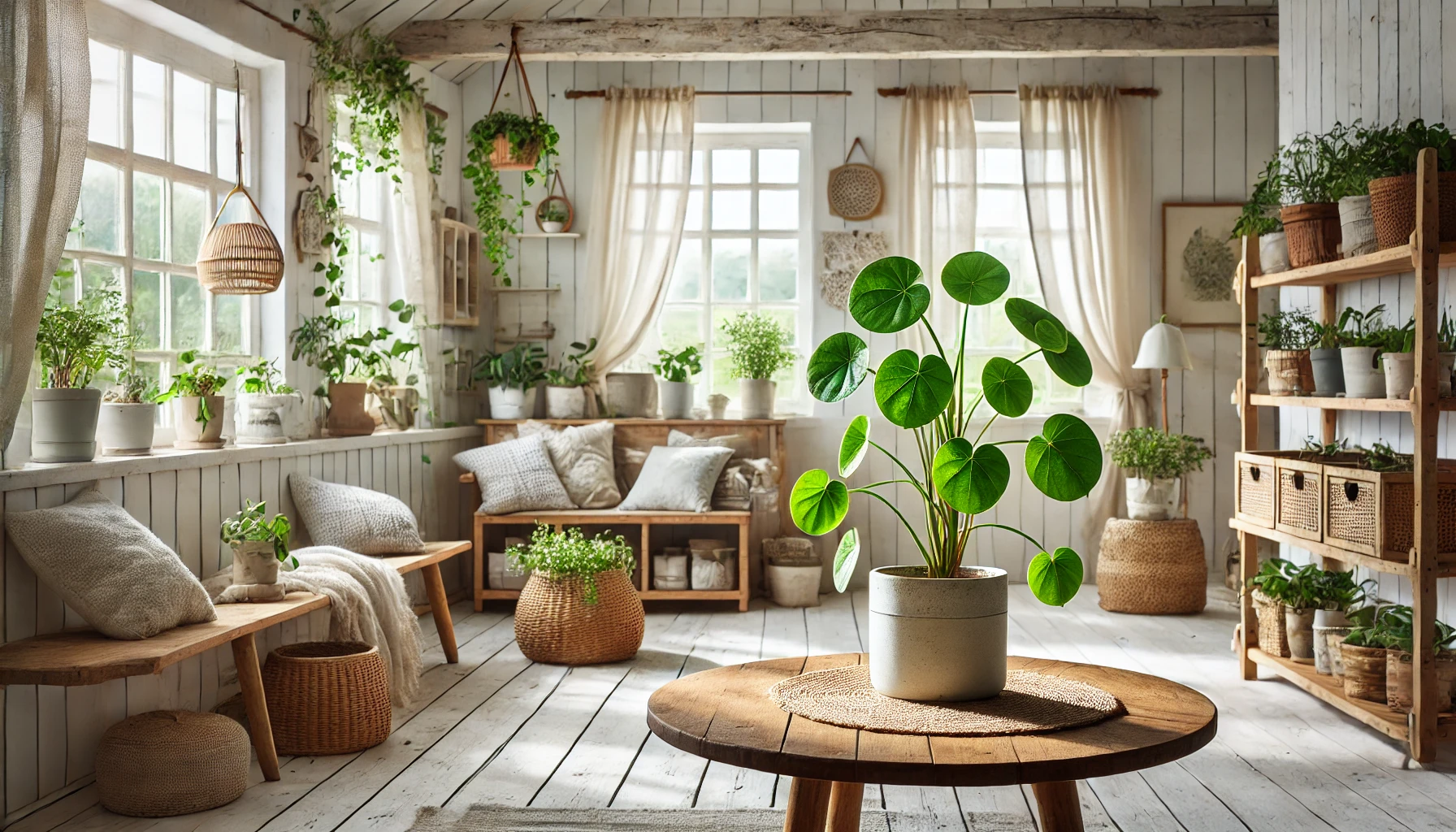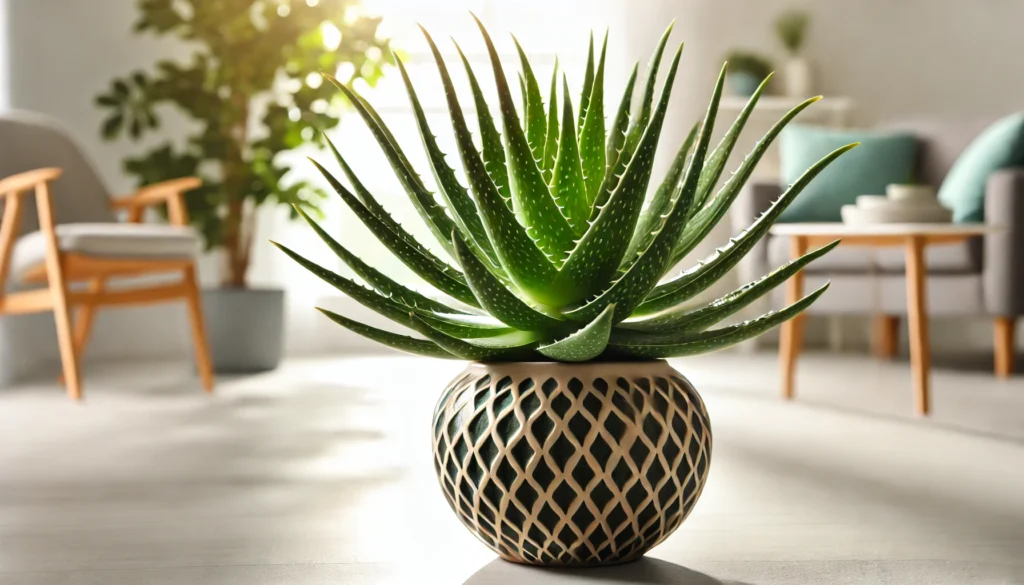
Pilea peperomioides, also known as the Chinese Money Plant or Pancake Plant, is a delightful addition to any home. This perennial plant, hailing from the Urticaceae family, is admired for its round, coin-shaped leaves that give it a unique and captivating appearance. Typically, Pilea peperomioides reaches a height of about 12 inches (30 cm), making it an ideal choice for tabletops, shelves, or any space that needs a touch of greenery.
History and Ideal Growing Conditions
Pilea peperomioides originated in the Yunnan Province of China and was introduced to the Western world in the mid-20th century. Its ease of propagation and charming appearance quickly made it a favorite among plant enthusiasts. This plant thrives in bright, indirect light and enjoys a well-draining potting mix. It prefers a slightly humid environment, with temperatures ranging from 60°F to 75°F (16°C to 24°C). Though adaptable, Pilea peperomioides should be protected from cold drafts and sudden temperature changes.
Toxicity and Pets
Good news for pet owners—Pilea peperomioides is non-toxic to cats, dogs, and other pets. You can enjoy the beauty of this plant without worrying about the safety of your furry friends.
Best Practices for Caring for Pilea Peperomioides
To keep your Pilea peperomioides thriving, it’s essential to provide the right care. Below are key aspects of care that will ensure your plant remains healthy and vibrant.
Watering and Humidity
Water your Pilea when the top inch (2.5 cm) of soil feels dry. This plant does not like to sit in soggy soil, so be sure to empty any excess water from the saucer to avoid root rot. Pilea peperomioides appreciates a humid environment, but it can tolerate average household humidity. If your home is particularly dry, consider misting the leaves occasionally or placing a humidity tray nearby.
Soil, Light, and Temperature
Pilea peperomioides thrives in a well-draining, peat-based potting mix. A mix designed for succulents or cacti is often a good choice. Place your plant in bright, indirect light—too much direct sunlight can scorch the leaves, while too little light may cause leggy growth. Ideal temperatures for Pilea range from 60°F to 75°F (16°C to 24°C). Avoid placing the plant near drafty windows or heating vents.
Fertilizing
During the growing season, typically from spring to early fall, feed your Pilea peperomioides with a balanced, water-soluble fertilizer every four weeks. Dilute the fertilizer to half the recommended strength to avoid overfeeding, which can lead to fertilizer burn. In the winter, reduce feeding to every six to eight weeks, as the plant’s growth naturally slows.
Common Problems and Remedies
Like all plants, Pilea peperomioides can face challenges. The most common issues include yellowing leaves, root rot, and pests like spider mites. Yellowing leaves are often a sign of overwatering, so adjust your watering schedule accordingly. If root rot occurs, it may be necessary to repot the plant in fresh, dry soil and remove any affected roots. For pest control, regularly inspect the leaves and stems, and if you spot any unwanted visitors, treat the plant with insecticidal soap or neem oil.
Pruning Pilea Peperomioides
Pruning is an essential part of caring for Pilea peperomioides, helping to maintain its shape and encourage healthy growth. The best time to prune is in early spring before the growing season begins.
Tools Needed
You’ll need a pair of sharp, clean pruning shears. It’s important to sanitize the shears before and after use to prevent the spread of disease. A solution of one part bleach to nine parts water works well for this.
Identify Areas to Trim
Start by identifying any dead or damaged leaves. Trim these away first, cutting as close to the base as possible without damaging the main stem. To shape the plant, remove any leggy growth or stems that are growing out of proportion. Aim to prune no more than one-third of the plant at a time to avoid stressing it.
Post-Pruning Care
After pruning, give your Pilea peperomioides a good watering and place it in a well-lit spot. The plant may need a few days to recover, so avoid fertilizing immediately after pruning. Keep an eye on the plant for any signs of stress, such as wilting or discoloration, and adjust care as needed.
Propagation and Benefits
Pilea peperomioides is known for its ease of propagation, making it a popular choice for sharing with friends and family. The plant often produces small offshoots, or “pups,” at its base. These can be gently removed and planted in their own pots once they have a few sets of leaves. Propagation not only helps spread the joy of this charming plant but also encourages the mother plant to grow more vigorously.
Final Thoughts
Pilea peperomioides, with its unique, round leaves and easy care requirements, is a fantastic addition to any home. Whether you’re a seasoned plant enthusiast or a beginner, this plant offers beauty and simplicity. By following the care tips outlined in this guide, you can enjoy a healthy and thriving Pilea peperomioides for years to come. Happy planting!



